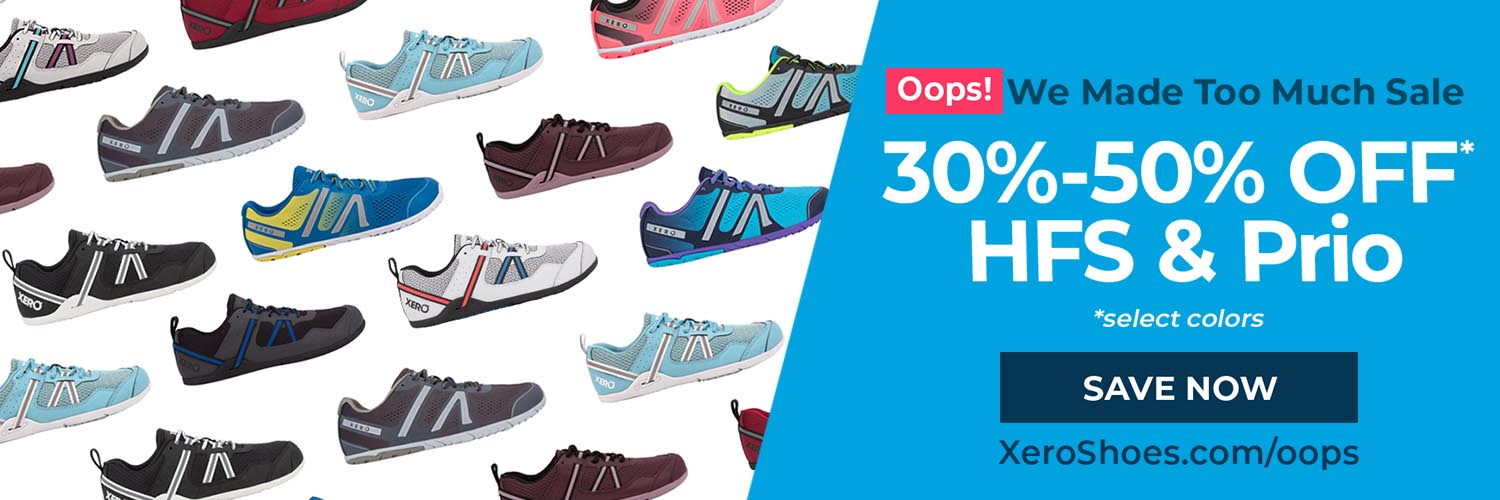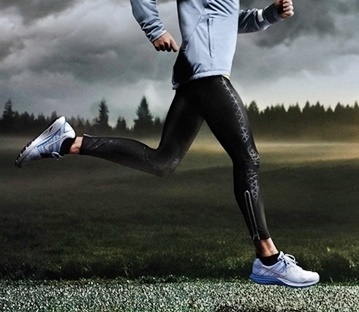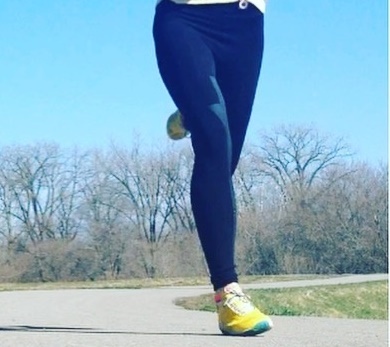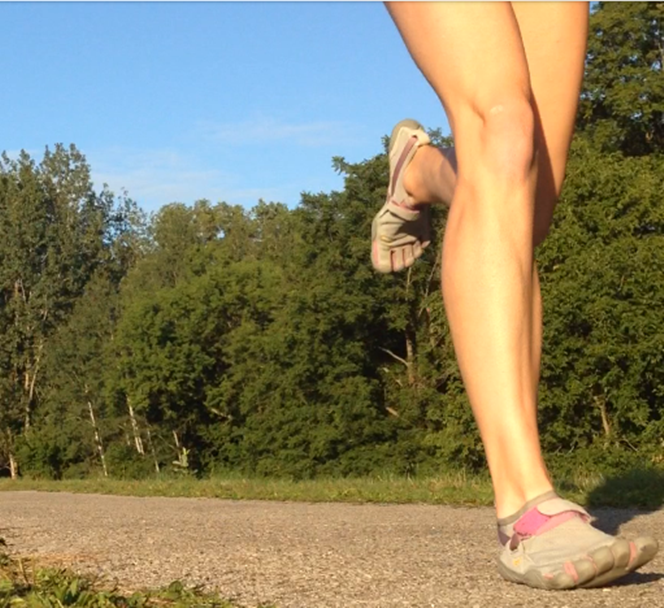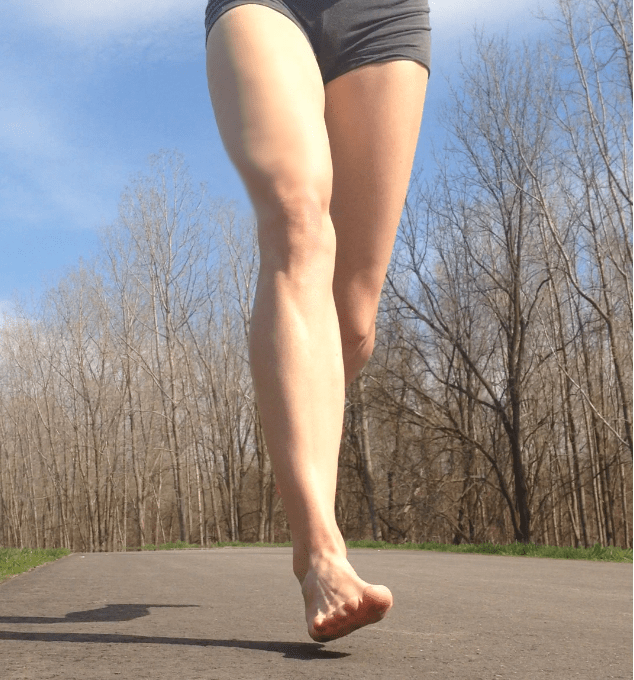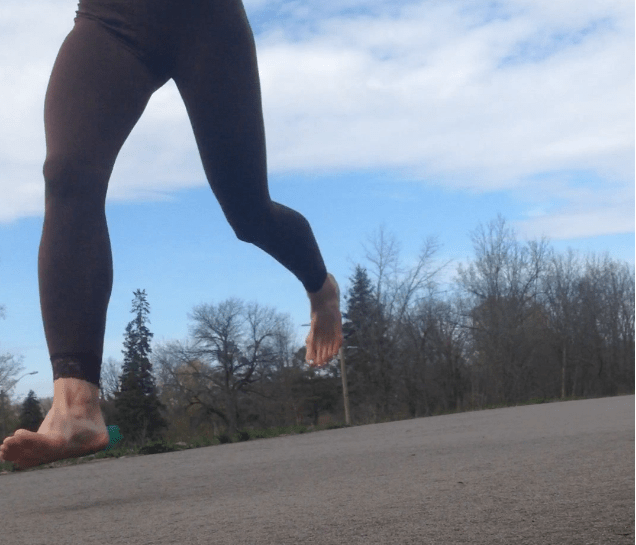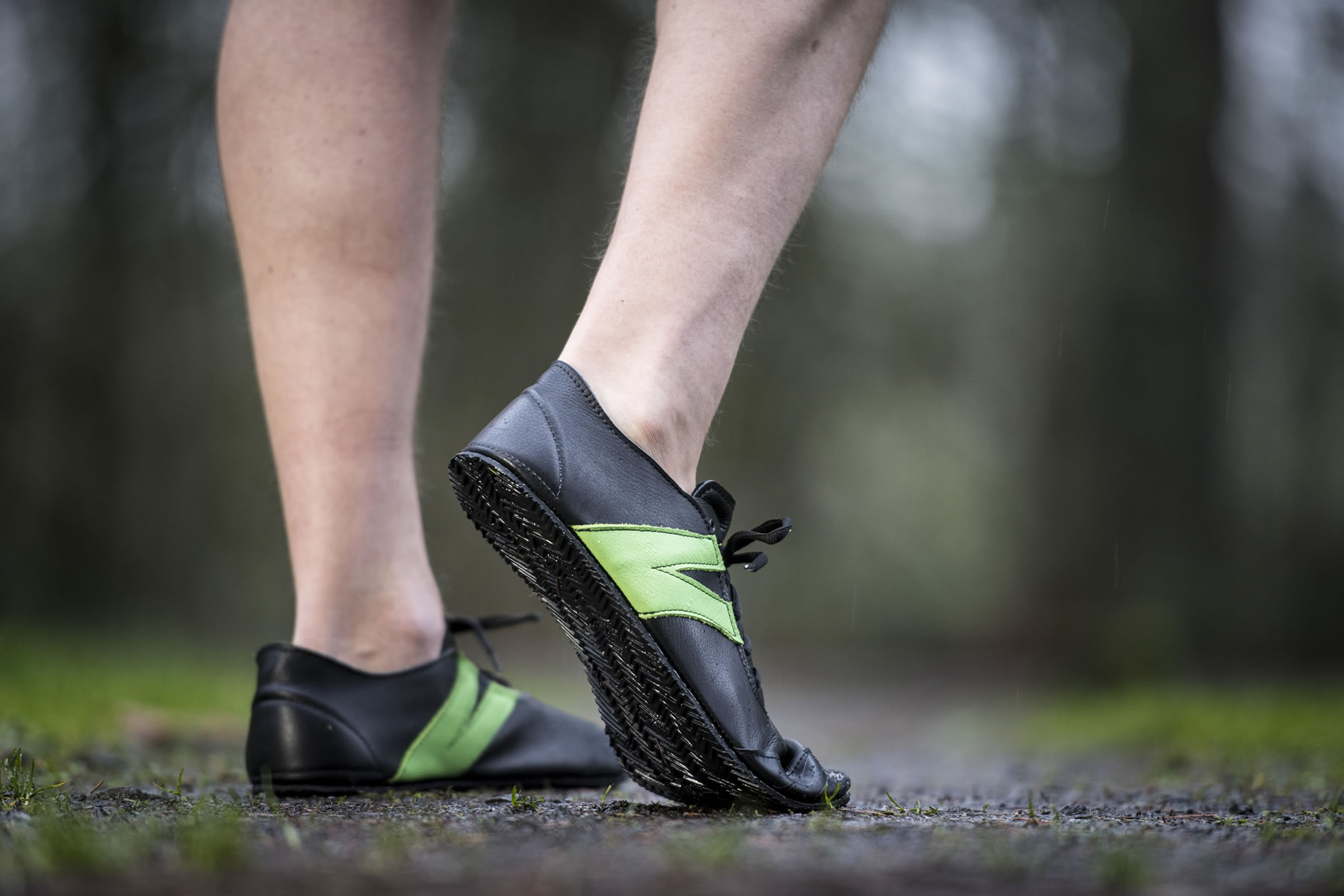More and more people are running barefoot or using minimalist shoes, like the Vibram FiveFingers, as rehabilitative asset to sustainably strengthen their feet and ankles, improve balance and prevent heel striking, and instead, adopt a proper forefoot strike landing when running. However, everybody adapts to running barefoot or in the Vibram FiveFingers differently. For instance, some people with unconditioned legs may experience temporary shin pain until the shin muscles develop new strength, but what exactly accounts for this shin pain?
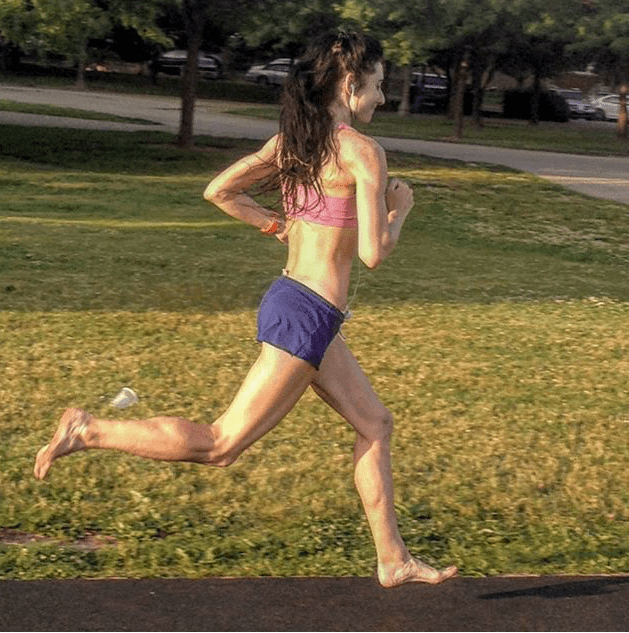
Why Your Shins Hurt When Running Barefoot or in the Vibram FiveFingers
When you land with a forefoot strike when running barefoot or in the Vibram FiveFingers, there are mechanical chain of events that accounts for temporary shin pain in newbie barefoot runners. It has been said that excessive use of the toe flexors is one cause of shin splints in runners. Specifically, what sets apart the foot strike mechanics in barefoot running and running in the Vibram FiveFingers from running in regular running shoes is the use of toe flexion at touchdown and may hint at why newbie barefoot/Vibram runners get shin splints.
When we run with a forefoot strike in regular running shoes, most of us keep our toes very relaxed and non-flexed at touchdown, shown below:
See how in the above photos, the toes are pointed down or are more parallel with the ground at landing? This means the toes are relaxed and are not fully flexed at touchdown as they are when running barefoot or in the Vibram FiveFingers which is shown below.
When we run barefoot or in the Vibram FiveFingers, our toes naturally flex up and splay upon and at touchdown (shown above). This toe flexion increases muscle activity in the anterior shin muscles and may cause shin splints in a beginner barefoot or Vibram runner until the shin muscles and toe flexors become stronger and fully adopted. Note: this toe flexion isn’t a bad thing, it’s simply a reflexive, natural response of the toes when you run barefoot or in barefoot shoes, and should be embraced because its also a normative response in all barefoot runners!
A bonus of this increased toe flexion upon landing is it increases contractions in the arch muscles, leading to a healthier, higher arch profile, and could be clinically helpfully for improving collapsed arches (flat feet).

The functional relevance of increased toe flexion at landing is that for one, the toes lift up to allow the balls of the foot to connect with the ground to achieve a forefoot strike landing.
- Another side note: forefoot running is not toe running. You do not land high up on your toes in a forefoot strike landing, rather initial ground-contact is made much lower on the foot, ahead of the arch. For more clarity, I did a YouTube video (here) showing a clear-eyed view of a proper forefoot strike landing.
The Take Home Message
The good news is, if you’re a new barefoot or minimalist runner grappling with shin splints, you don’t have to abandon your barefoot running efforts, the pain is just developmental pain due to the shin muscles being used in a different way, but being used in the way they were designed. Given enough time and patience, your shins will adapt to their standard role in engaging toe flexion at landing, and will strengthen to produce a capable, more durable leg over the long term!
References:
Viitasalo JT and Kvist M. Some biomechanical aspects of the foot and ankle in athletes with and without shin splints. Amer J Sports Med, 1983; 11(3):125-130.
If you’ve enjoyed this blog post, you’ll love my YouTube channel, Run Forefoot, where I talk the about the evidence-based reasons that forefoot running is safer and more efficient than heel strike running.
If you’d like, you can support Run Forefoot and help keep it going by making a donation in any amount of your choosing:

Or, you can also support Run Forefoot by shopping at the following top minimalist shoes brands, and be sure to bookmark the links:
Be Lenka: https://www.dpbolvw.net/click-7600968-14330828
Xero Shoes: https://xeroshoes.com/go/Run_Forefoot
Iguaneye: https://www.iguaneye.com/?ref=8tfXVc92
Soft Star Shoes: https://shrsl.com/3mp1b
Wilding Shoes: https://bit.ly/3lIygQP
Earth Runners: https://earthrunners.com/?rfsn=6763579.f7f9c9
Vivobarefoot: https://shrsl.com/3kvih
Zappos: https://goo.gl/J1CeAd
Bretta Riches
BSc Neurobiology; MSc Biomechanics candidate, ultra minimalist runner & founder of RunForefoot. I was a heel striker, always injured. I was inspired by the great Tirunesh Dibaba to try forefoot running. Now, I'm injury free. This is why I launched Run Forefoot, to advocate the health & performance benefits of forefoot running and to raise awareness on the dangers of heel striking, because the world needs to know.
Latest posts by Bretta Riches (see all)
- Are Minimalist Shoes Good for Seniors? YES! - 14/04/2024
- BIG Deals On Running Gear And More! - 09/04/2024
- Why Are My Feet Tired After Running? - 04/04/2024

